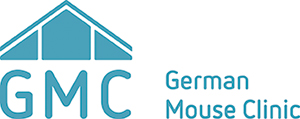Request procedure
For the phenotypic analysis (primary screen) of your mutant mouse line you have to provide 15 males and 15 females (mutants) and 15 males and 15 females (wildtype). The wildtype animals have to be littermates of the mutant animals. The animals have to be sent when they are 7 weeks old and genotyped. The maximum age difference between youngest and oldest is 7 days. If the groups don't have the appropriate number of animals, the import of mice will be rejected. The Collaboration partner shall keep us informed about the progress of breeding and the preparations for shipping (e.g. start of breeding, birth dates).
- Please fill in the request form completely
- Please wait until we contact you
- We might ask for additional information that should be sent separately:
- a health report according to the FELASA rules (example; pdf-file; 32kB) (not older than 3 months, including the results of the last 18 months) plus the result of a test for murine Norovirus (MNV)
- a complete list of publications concerning the mutant mouse line
- a copy of the 3 most important papers
- a summary of what is already known about the mutant mouse line (overview; doc-file; 39 kB; please write in english) including following areas. This summary will also be used to decide if findings of phenotypic analysis are "new" findings.
- The role of the gene
- pathways involved
- generation of the mutation, background, breeding strategy
- features/phenotypes of the mutant mouse line
- possible disease models
- what phenotypes/functions of the gene do you expect?
- specific conditions: e.g. special food, cage conditions, known susceptibility because of the mutation or background (e.g. narcosis)
- After receiving all documents you will be contacted by e-mail if we can consider your request.
- When your request is accepted, we will have to sign a collaboration agreement (GMC_Collaboration_Agreement; pdf-file; 145 kB) (see Collaboration policy). As a next step we will arrange a shipping date according to the provided information and the availability of free time slots (the mice should be shipped at the age of 7 weeks).
- If you think the procedure is not applicable to your mouse line please contact us as soon as possible for further support.
- Two weeks before the start of the breeding: confirmation of the number of breeding pairs available.
- Mate the appropriate number of animals ( e.g. for heterozygous x heterozygous breeding with average litter size and fertility we recommend using > 30 breeding pairs). Please mate on Tuesday of the week we will announce and continue mating for 7 days, and after the mice are born, please let us know the number, sex, and date of birth of the mice (mouse husbandry; pdf-file; 83 kB).
- When the mice are 4 weeks old please let us know the number, sex and genotype of the animals to be sent (a file containing mouse and parent information has to be supplied with the mice (shipping information_2020 (xlsx-file; 11 kB) which has to include the genotype of the mice). To ensure the highest level of data quality, we strongly recommend genotyping twice (on independent samples) before you send the mice. Please use our system for earmarks (pdf-file; 100 kB). We do not accept other earmark systems or metal earclips.
- Organize shipment of the mice in the calendar week we announced to you. If possible, the mice should arrive on tuesday or wednesday of this week. Arrival time of the mice should not be later than 2:00 pm. As soon as a forwarder has been assigned, please provide us with the date and time of arrival as well as the phone number of the forwarder. Animals should be sent exactly in the same group in which they were housed in the facility of origin (specially males originating from different cages should not be mingled; it is rather likely that they will fight and hurt each other).
(download: shipment instructions 2020; pdf-file; 202 kB). - Please provide a scheme of your breeding, starting from the generation of the mutant mouse line.

